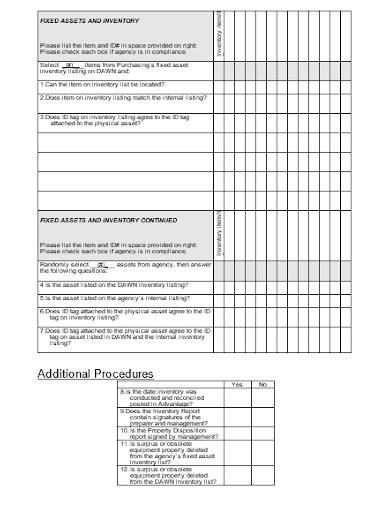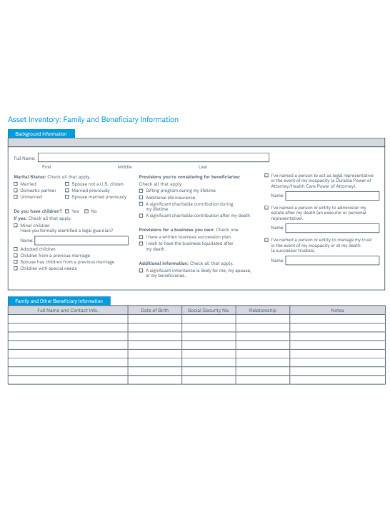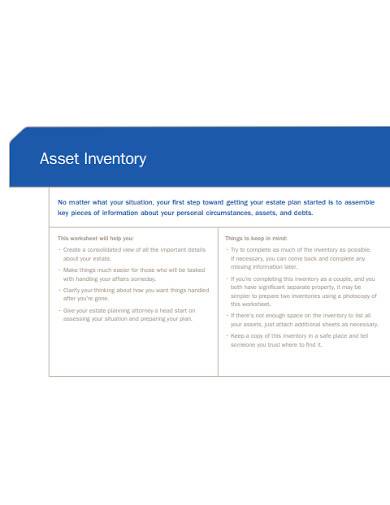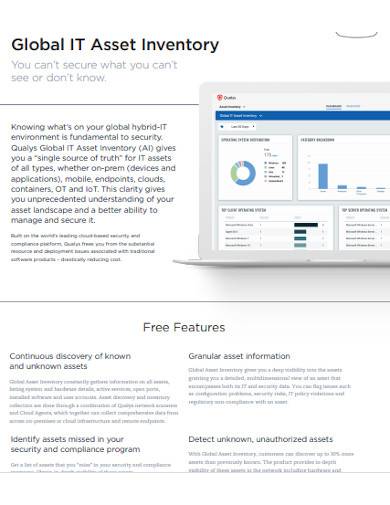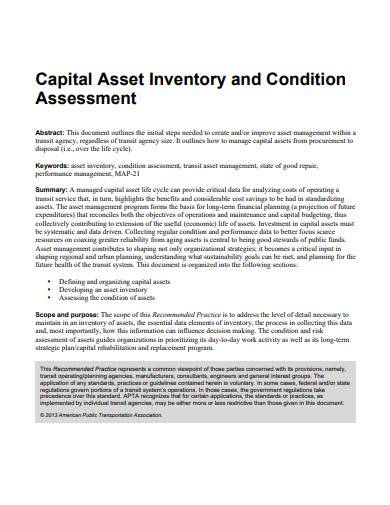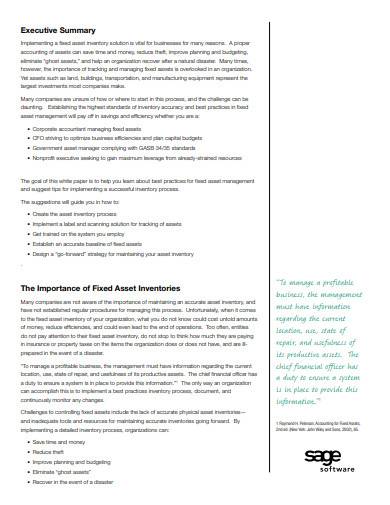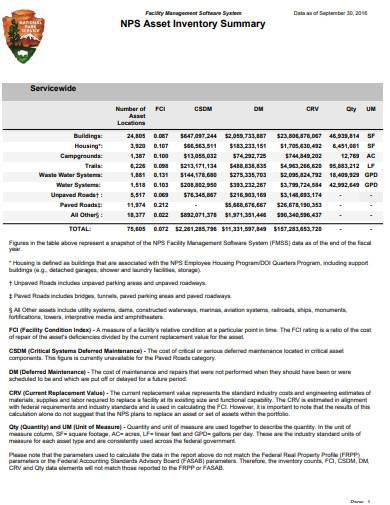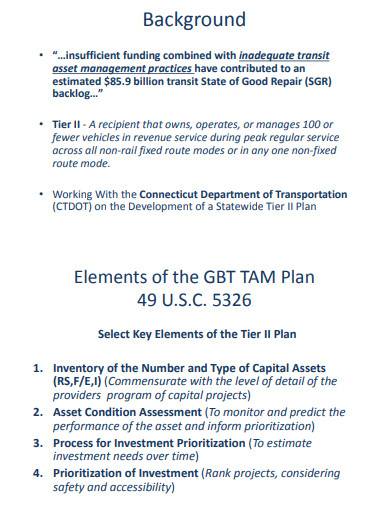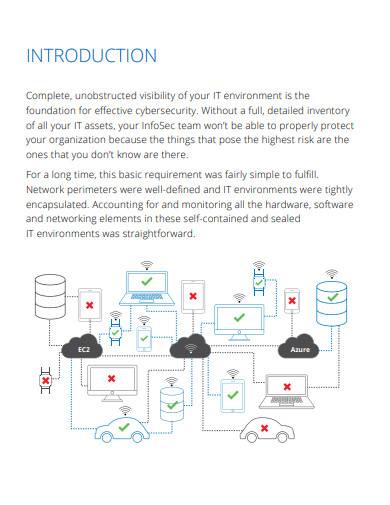Assets refer to things or properties that are owned by a person or company. A person or company can own several assets that they often used to pay debts when needed. Assets produce a positive economic value, that is why people and companies spend on them, expecting that their value will increase in the future. Some companies own a lot of assets that it’s almost impossible to be able to keep track of them. But with proper asset inventory, all assets can be managed accordingly and provide benefits to the company.
What Is Asset Inventory?
Asset inventory is the process of managing assets of value so that they can be sold for profit. People and companies alike purchase assets so that they can sell them when their value rises. Assets include merchandise, raw materials, properties, equipment, and finished or unfinished products. These assets are saleable inventory items. Asset inventory management plays an important role in business because it allows the business to know what they already have and what actions the business must take to keep their assets working.
How to Effectively Manage Asset Inventory
What do you have? This is a question that is commonly asked during an inventory. There are a lot of ways to conduct a proper goods inventory, such as the use of inventory checklists. The inventory list will help you figure out what to do and provide you a list of the items you need to check. But the checklist is not enough because it’s not an assurance that the asset inventory you’re doing is effective. You’ll need to implement best practices for the effective management of your asset inventory.
1. Inventory Size Approximation
You can conduct an accurate inventory if you have no idea what assets you own. It doesn’t matter how big or small your assets are. What’s important is that you know what they are. An estimate would be fine. What you can do to determine the approximate size of your inventory is to check the assets that you own and make record them using a blank list template. Use the list as a reference on your actual asset inventory.
2. Put Someone in Charge
The size of your assets determines how many people you need to conduct the inventory. If you need help with conducting the inventory, then you can assign someone reliable to help you. But if there are a lot of assets to manage, you may need a whole team to do mange the asset inventory.
3. Learn the Basics
You can’t be good at asset inventory management if you don’t know the basics. It all boils down to the basics. Learning the basics includes knowing the value of each of your assets, its current cycle, as well as the current status of your asset. Learning the basics may take some time and a lot of things may confuse you at first. Just always remember that your hard work will pay off.
4. Use Technology to Your Advantage
Asset inventory management softwares are now available to help make the task easy and convenient. Technological advancement led to the creation of tools that make life convenient. With the use of a computer program in conducting inventories, work becomes lighter and more convenient.
5. Organize Your Assets
Aside from using the appropriate software for asset inventory, organizing your assets is also a good thing to practice. If your assets are organized, your team will find it easy to access later on when they need to. Update and integrate records into your database. Get rid of assess that are not doing any good for the company .
6. Make Regular Updates
All the best practices above will only be worth it if you regularly update your asset inventory. This way, you’ll know the condition of your assets and what to do to organize them. Conducting regular updates ensures that you are always on track with your assets inventory.
FREE 11+ Asset Inventory Samples and Templates in MS Word | PDF
1. Fixed Assets and Inventory Template
2. Asset Inventory Template
3. Asset Inventory Worksheet Template
4. Global IT Asset Inventory
5. Capital Asset Inventory Template
6. Fixed Asset Inventory Sample
7. Asset Inventory Summary Template
9. Cloud-Based IT Asset Inventory Template
10. Asset Inventory and Facility Assessment
11. Asset Inventory Module Template
12. Cloud-Based IT Asset Inventory
What are the examples of assets?
There are two main types of assets, and they are tangible and intangible assets. Tangible assets include properties, equipment, cash and cash equivalent, investments, buildings, vehicles, furniture, stocks, and inventory. They are assets that you can touch. Intangible assets are assets that do not have physical substance. Examples of intangible assets are trademarks, patents, copyright, franchises, trade names, brands, and goodwill.
What type of asset is a piece of land based on its convertibility?
Assets are classified based on their convertibility into cash. The classifications are current assets and fixed assets. Current assets, also known as liquid assets, are assets that can be easily converted into cash. Fixed assets or non-current assets is the opposite of current assets. A piece of land is a fixed asset because it cannot be easily converted into cash. It is also referred to as long-term assets or hard assets.
Can you conduct an inventory of intangible assets?
Yes, you can. Intangible assets may lack physical substance, but they can be counted. Just like tangible assets, intangible assets can be sold for profit. They often have a higher value or more expensive than tangible assets.
If you need help with organizing your asset inventory, then you can check out the samples and templates above. They make reliable reference materials that you can view and download without having to worry about membership fees and contracts. The asset inventory samples and templates can be downloaded for free! Try it out now!
Related Posts
FREE 8+ Sample Liquor Inventory Templates in PDF Excel
FREE 4+ Book Inventory Samples in PDF
FREE 8+ Home Inventory Templates in PDF
FREE 19+ Sample Inventory Checklist Templates in Google Docs ...
FREE 12+ Rental Inventory Templates in PDF
FREE 9+ Stock Inventory Control Templates in MS Word PDF | XLS
FREE 16+ Inventory Worksheet Templates in PDF MS Word | Excel
FREE 9+ Stock Audit Report Samples & Templates in PDF MS Word
FREE 9+ Inventory Report Samples and Templates in PDF MS Word
FREE 5+ Sample Tenancy Inventory Templates in PDF
FREE 11+ Supply Inventory Templates in PDF Excel
FREE 9+ Inventory List Samples in MS Word PDF
FREE 11+ Inventory Spreadsheet Templates in Google Docs ...
FREE 5+ Inventory Tracking in PDF Excel
FREE 12+ Home Inventory Worksheet Templates in PDF MS Word ...

